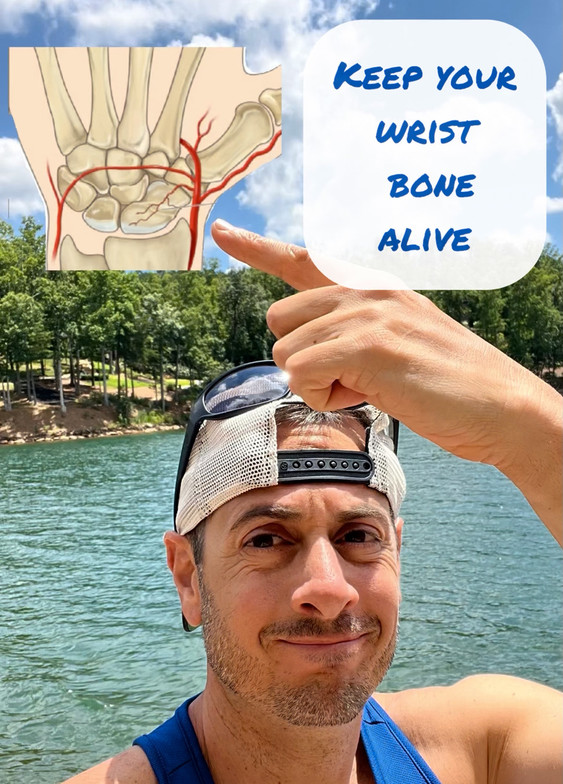
Falling on an outstretched hand is one of the most common ways to injure your wrist. When this happens, one bone that’s especially at risk is the scaphoid, a small bone near the base of your thumb.
What makes a scaphoid fracture tricky is its unique blood supply. Most of the scaphoid’s blood comes from a small branch of the radial artery that enters at the end closest to your fingers and flows backward toward your forearm. If the bone breaks closer to the forearm side (the proximal end), that blood flow can be disrupted. Without enough blood, the bone may heal poorly or not at all, which can lead to a serious condition called avascular necrosis, where part of the bone actually dies.
To make things worse, scaphoid fractures are often missed on initial X-rays, especially if the break is small or hidden. That’s why pain or tenderness in the ‘snuffbox’ area — the soft spot at the base of your thumb — should always be taken seriously after a fall. Doctors may order repeat X-rays or an MRI if they suspect a hidden fracture.
If you ever fall on an outstretched wrist and feel pain near your thumb that doesn’t go away, don’t ignore it — early diagnosis and proper treatment can prevent long-term pain, stiffness, and even arthritis down the road.

Dr. Steve Muscari
Contact Me

.jpg)


